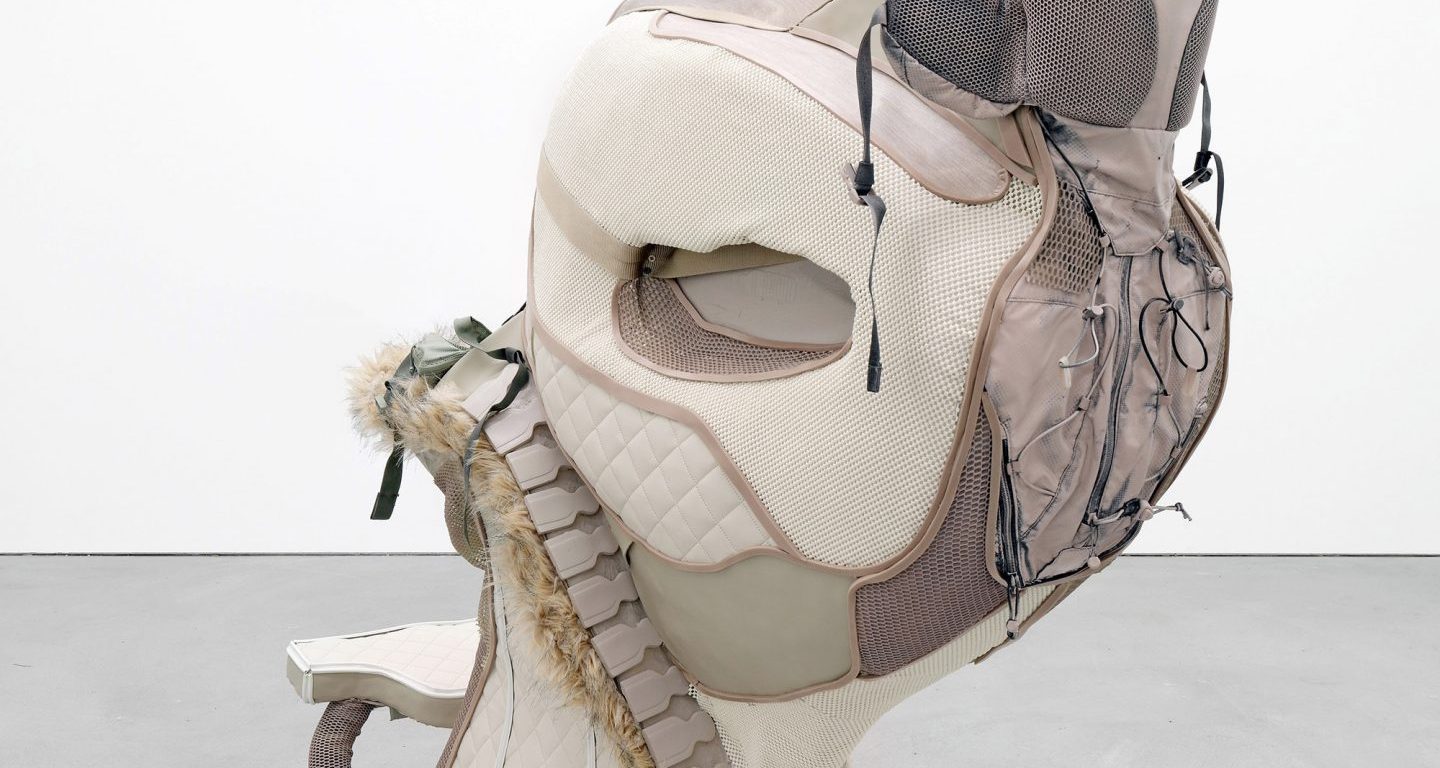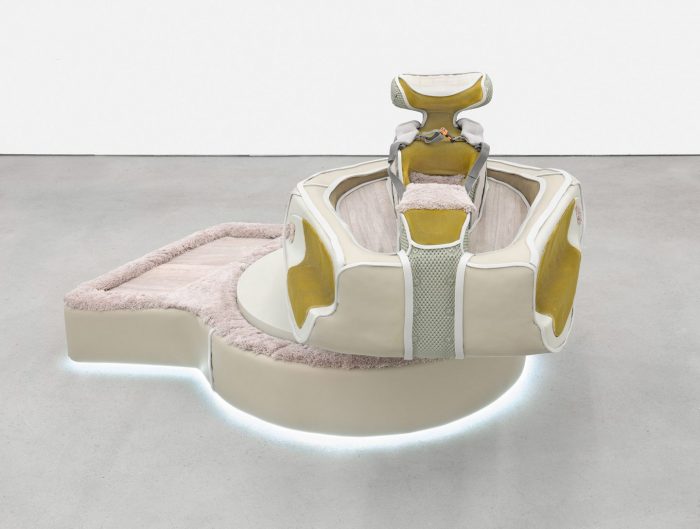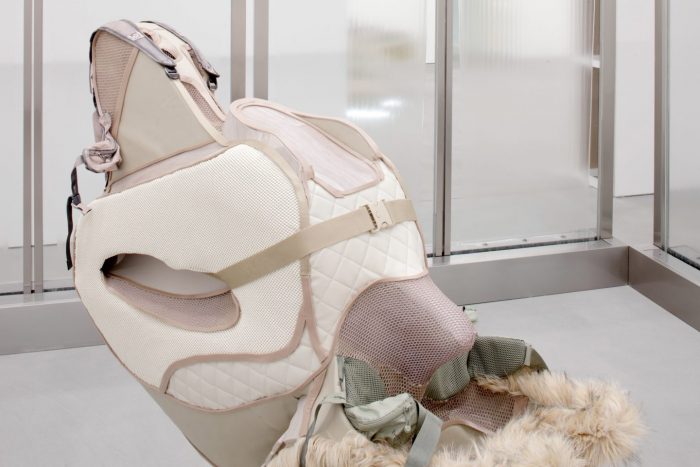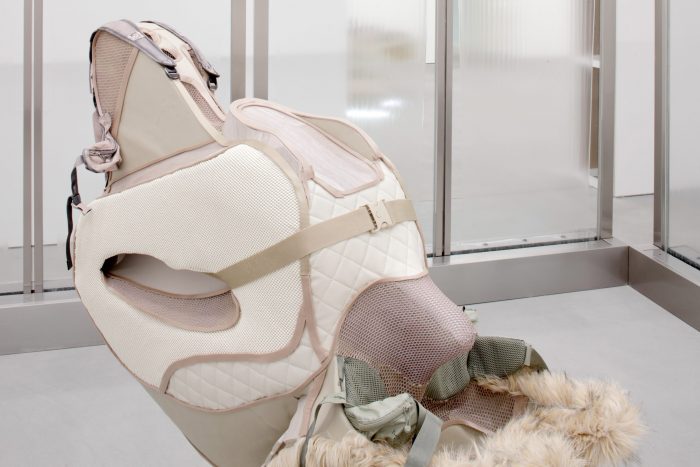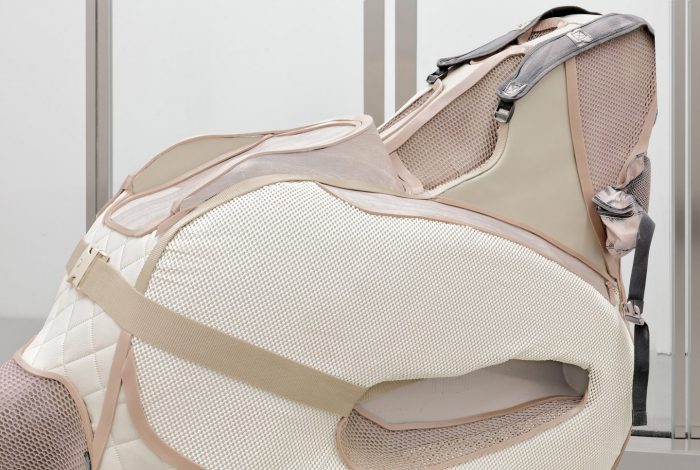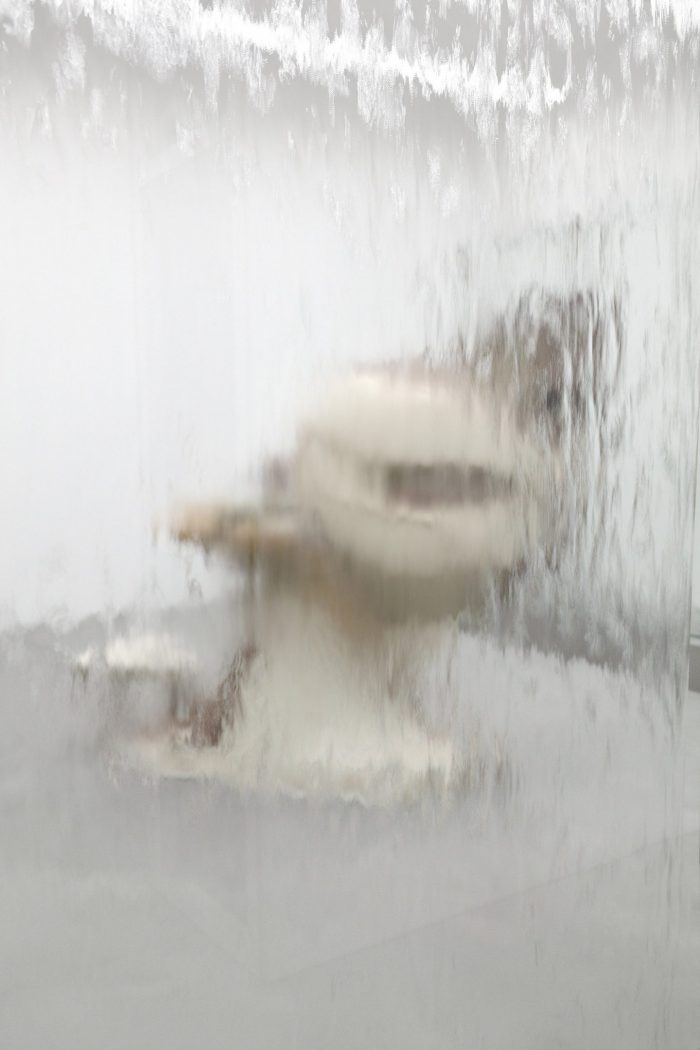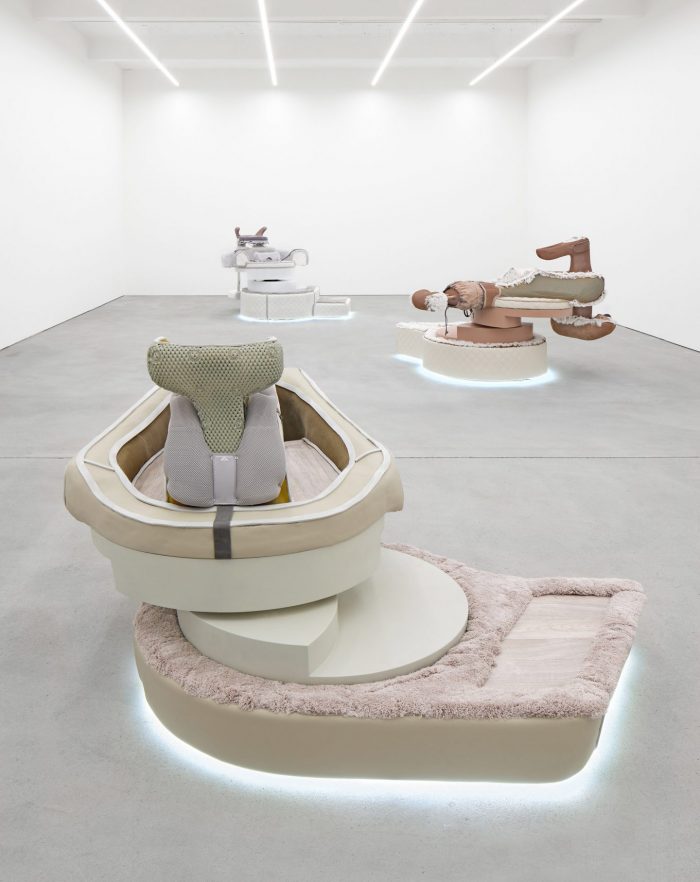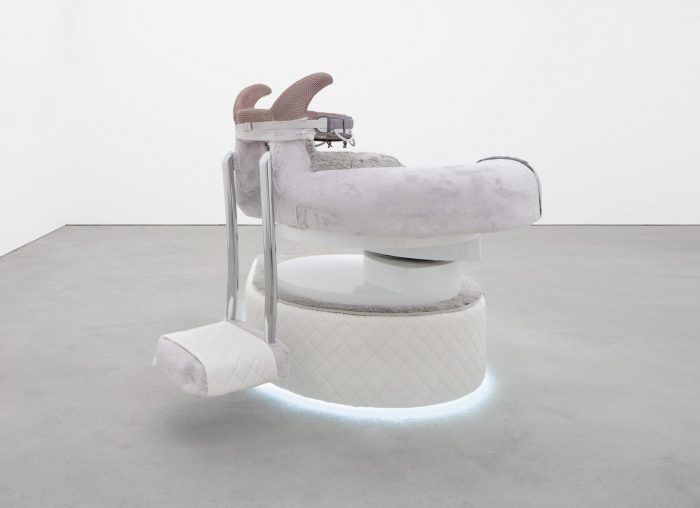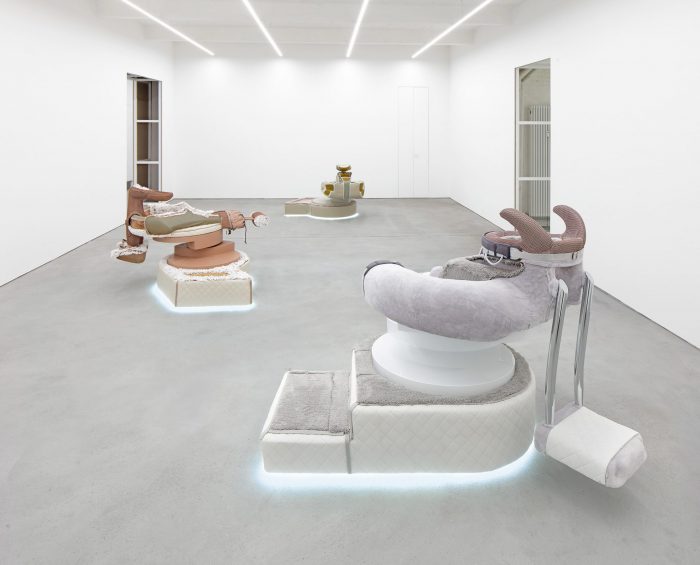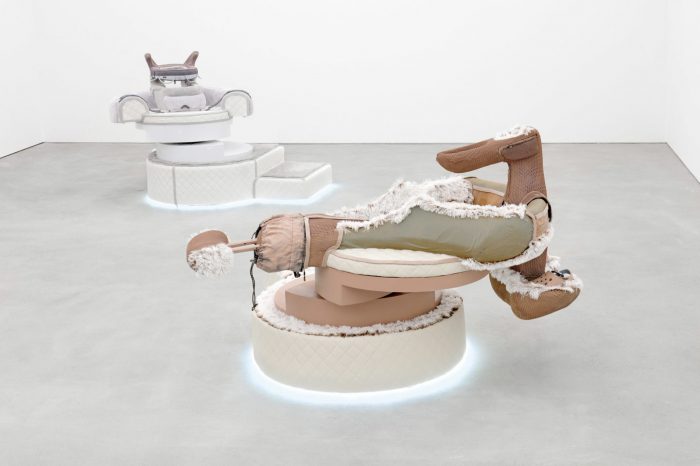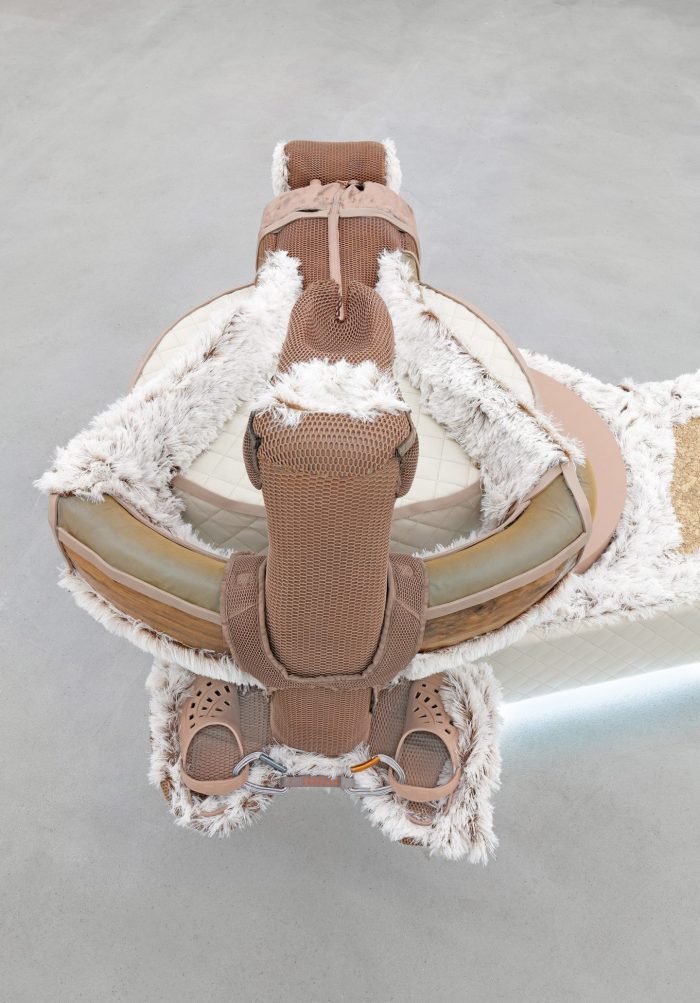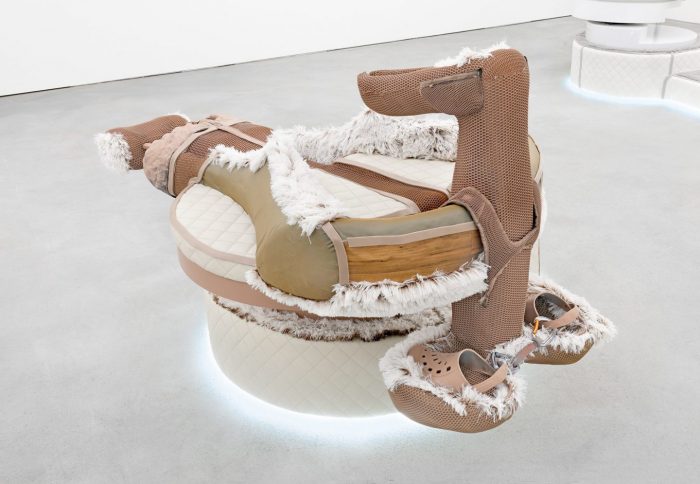在《水之山》(Sante Par Aqua)中,柏林艺术家安娜•乌登伯格(Anna Uddenberg)揭示了剥削性叙事:劫持商业概念,并通过她的触觉雕塑扭曲它们。
她最近的作品采取了非具象的形式,延续了她的不切实际的理想主题,并把它们从女性的身体转移到建筑空间。这些作品与她过去的作品有着共同的审美线索,它们将熟悉的元素重新组合成家具般的雕塑,而这些雕塑的功能仍然未知。这些覆盖在宝座上的毛绒材料代表了建筑;这些豪华的空间既让人熟悉,又让人感到混乱,它们是你无法坐上去的座位。当这个系列在克劳帕-托斯卡纳Zeidler展上展出时,这三个雕塑单独坐在一个房间里——房间下面的灯光让它们看起来像是漂浮着的。在三件作品中,有一件的四周立着一层四面墙的水幕:在持续数小时的人工降雨中,水给了它隐私。这些作品,就像Uddenerg的大部分作品一样,看起来很陌生。小元素仍然很熟悉;鞋子、包带、材料——但它们的组合标志着它们是令人不安的外国产品。
In ‘Sante Par Aqua’, Berlin-based artist Anna Uddenberg sheds light on exploitative narratives: hijacking commercial concepts and contorting them through her tactile sculptures.
Her most recent work has taken non-figurative form, continuing her theme of unrealistic ideals and moving them from the female body to architectural spaces. Sharing an aesthetic thread with her past projects, these pieces reconfigure familiar elements into furniture-like sculptures whose functions remain unknown. These plush, material covered thrones act as proxies for architecture; offering spaces of luxury that are at once familiar but dislocating, they are seats that you cannot sit on. When this collection was exhibited at Kraupa-Tuskany Zeidler, the three sculptures sat alone in a room — the light beneath making them appear as if floating. Around one of the three pieces stood a four-walled veil of water: granting it privacy through eternal hours of man-made rain. The pieces, like much of Uddenerg’s oeuvre, appear alien. Small elements remain familiar; shoes, bag straps, material — but their assemblage marks them as disconcertingly foreign.
Author: Anna Uddenberg
Project: Sante Par Aqua
Photography: © Anna Uddenberg

